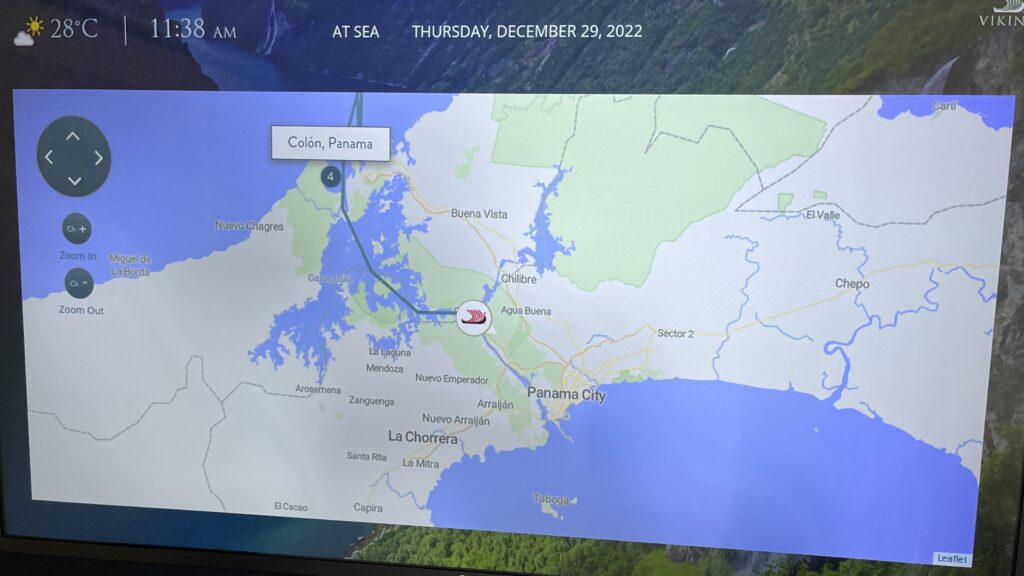
The map images are a bit before noon as we wanted to be up on the observation deck at actual noon.
Actual Noontime Location Check: N 09º 02′ 40.17″ – W 079º 38′ 53.24″
Up and out the door by 5:45 – early enough to watch our passage under the Atlantic Bridge – the northern entrance (from the Atlantic) to the canal.
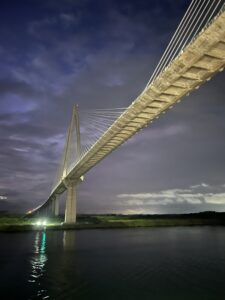
Then we waited. We entered the first lock just after 7:00. We had plenty of time to grab a Norwegian waffle from Mamsen’s, chat with fellow gawkers, do a bit of bird watching (Frigate Birds, Brown Pelicans, the odd Toucan or two, and (they tell us) a couple of parrots perched on a tree just long enough for me to lift my camera but not long enough for me to actually find them and zoom in 🤬).
Speaking of mules, It’s a common misconception that the mules tow the ship thru the locks. Actually the ship provides its own propulsion. The mules function is to keep the ship aligned and in the center of the lock. It’s also a misconception that the diesel powered machines seen today replaced actual live mules. Live mules were never used on this canal.
Around 8:00 we moved down from deck 7 (overlooking the bow) to deck 2 (the promenade deck) to get an up-close and personal view of the lock. I won’t bore you with a picture. Imagine looking at a 100 year old wall of scummy concrete.
Leaving the third lock we had risen 83 feet above sea level. And it was time for breakfast – on the Terrace, which faces aft. From there we got some good shots of the Norwegian ship following us as well as the smaller boats headed the other direction.
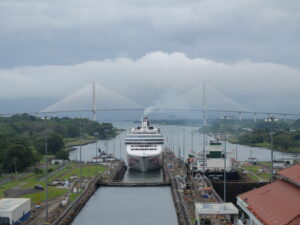
Thru the locks we entered Gatun Lake.
Gatun is a man-made lake slightly smaller than Lake Tahoe. It’s major source of water is the Chagres River. The lake was constructed to provide water for the lock systems on both sides of the canal. Cheryl (who actually listened to the ongoing commentary today) reports that the passage of each ship will release 55 million gallons of water into the oceans. That’s a lot of water and it’s only possible to support the canal system because of the annual rainfall that Panama receives.
The slow-motion excitement of the first locks behind us we retired to the veranda watching the monkey Islands (and the odd mega-ship) float by.
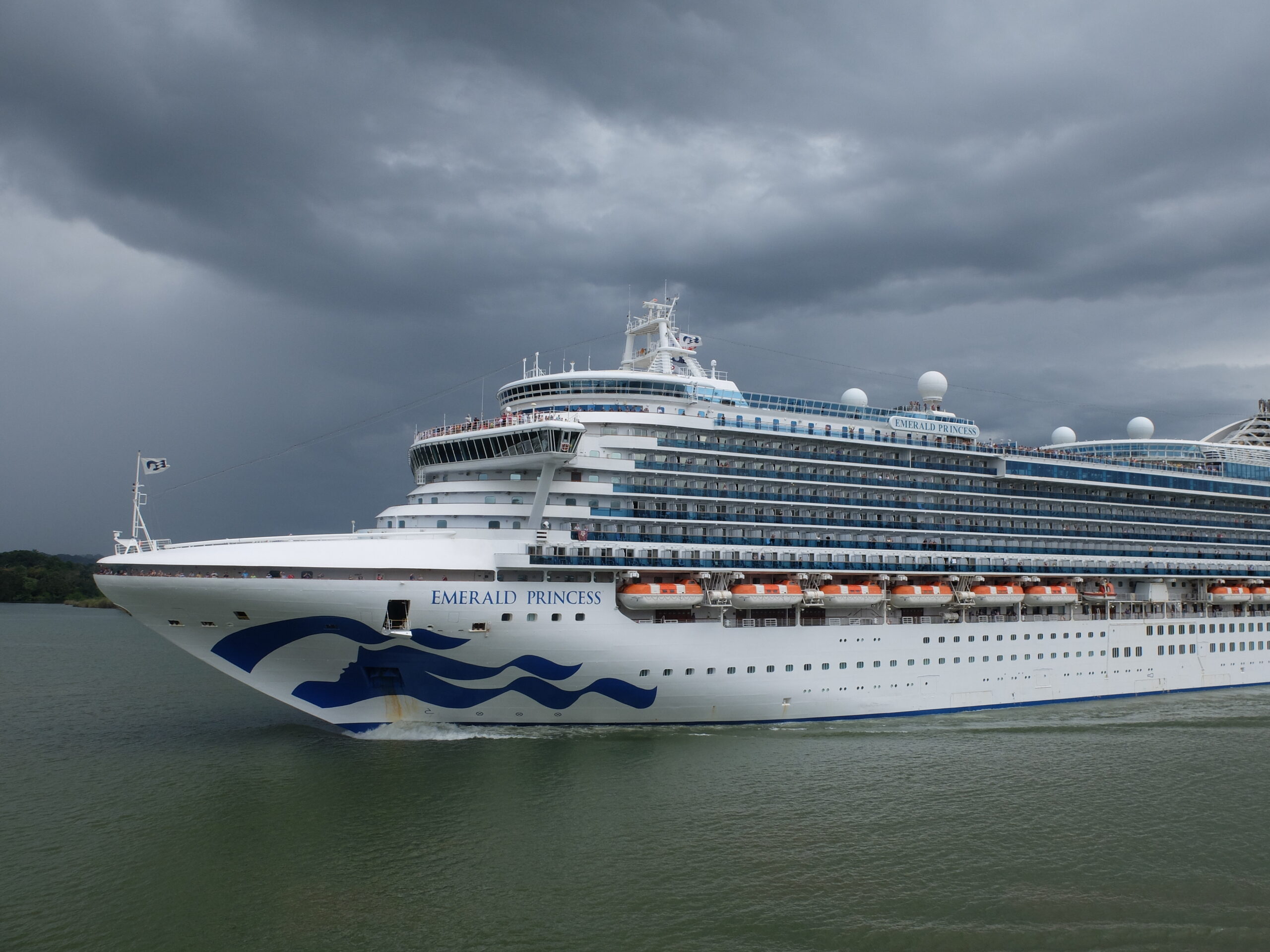
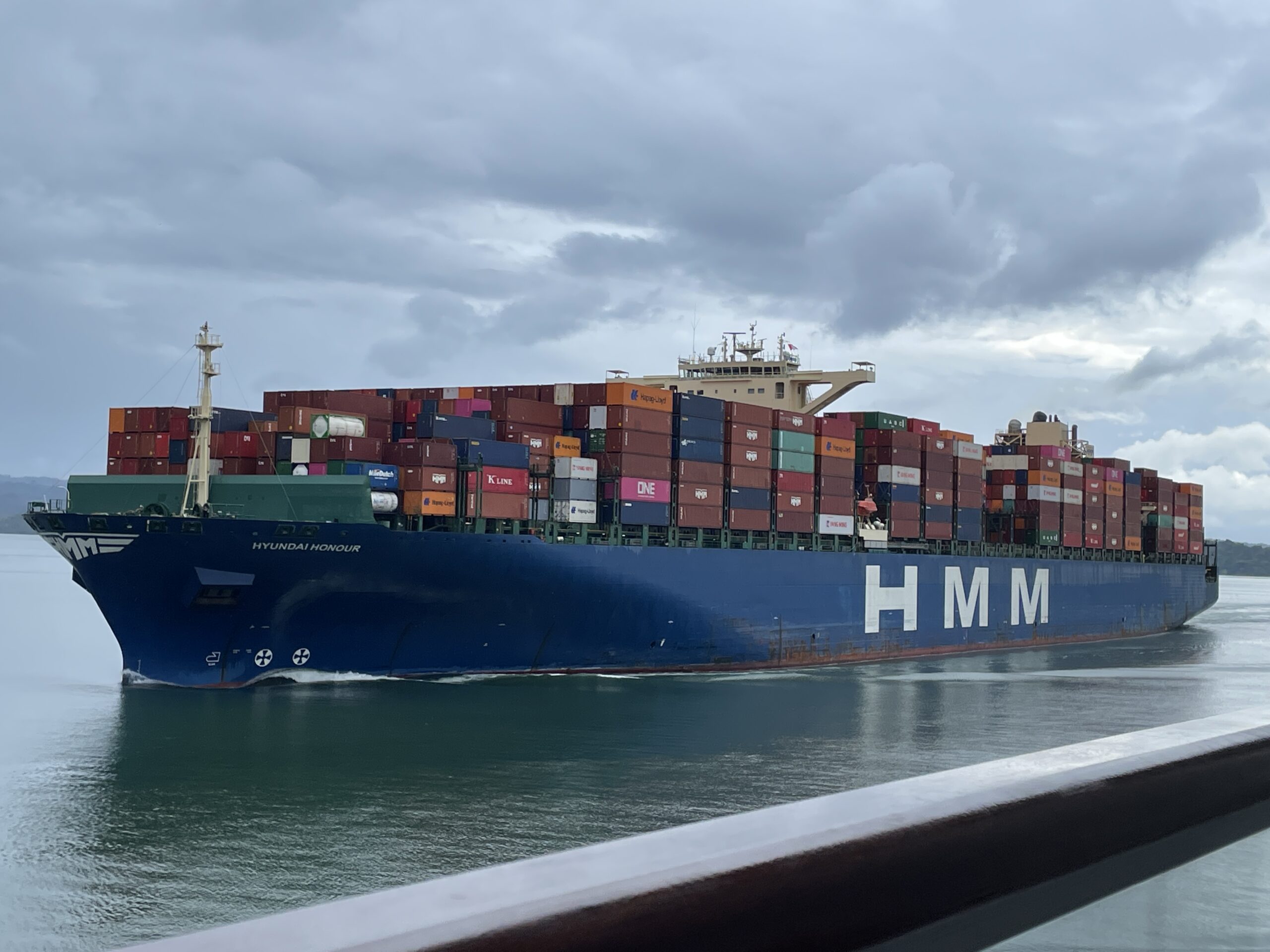
Leaving the lake we entered the Culebra Cut – where the canal builders sliced thru the mountain range.
We occasionally wandered up on deck to check out progress and make sure the Captain was still heading in the right direction.
Eventually we got to the last set of locks.
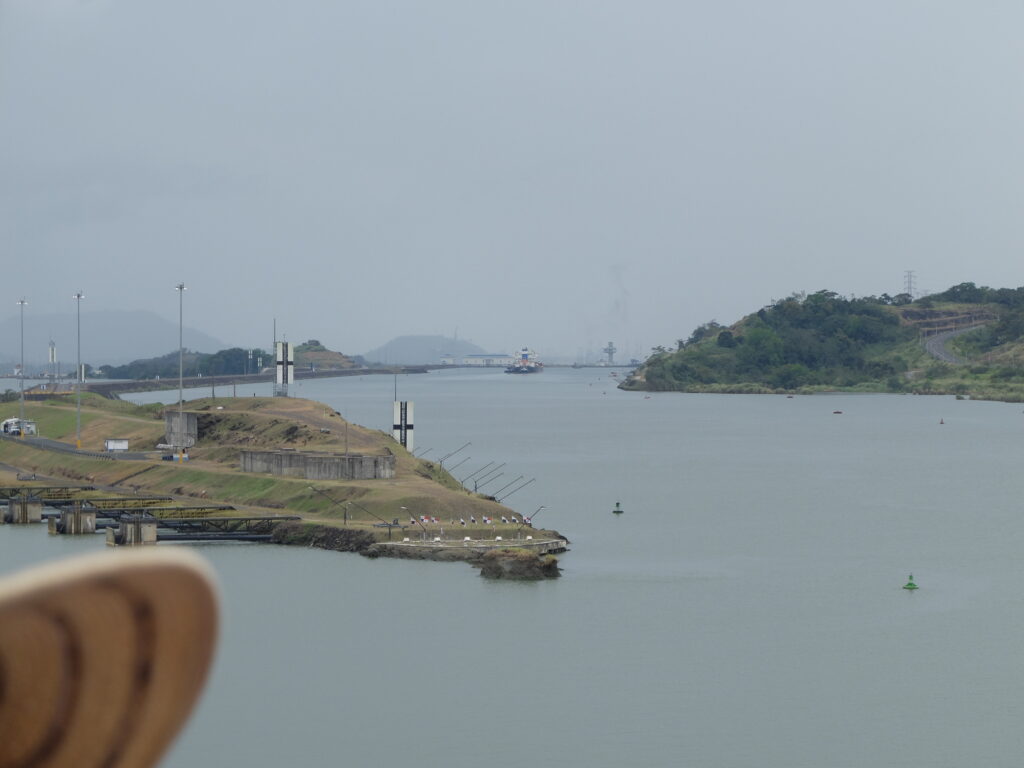
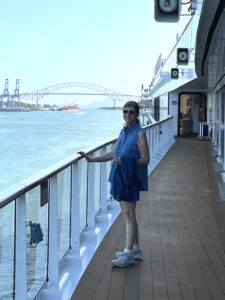
About 3:00, after descending 3 locks, discharging our pilot, and crossing under the bridge we left the canal behind and moved out into the bay.
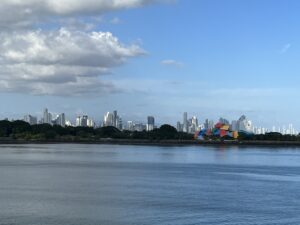
The rest of the afternoon was very much like a normal sea day: Lecture by our Resident Historian on Pirates, Presentation by the retired spook on “Gadgets from Q’s workshop” a review of the hardware of spy-craft thru the ages. (In the latter part of his career he was the Director of the CIA’s Office of Technical Services – our version of Q), dinner, and Bruce’s Brain Busters – 10 out of 20, dismal at best.
We did get a bit of good news today. Tonight we set our clocks back an hour – so we move to Central Time.
That’s all for now. time to read, relax, and see if I can get YouTube to cooperate in posting videos.
Nite all! R
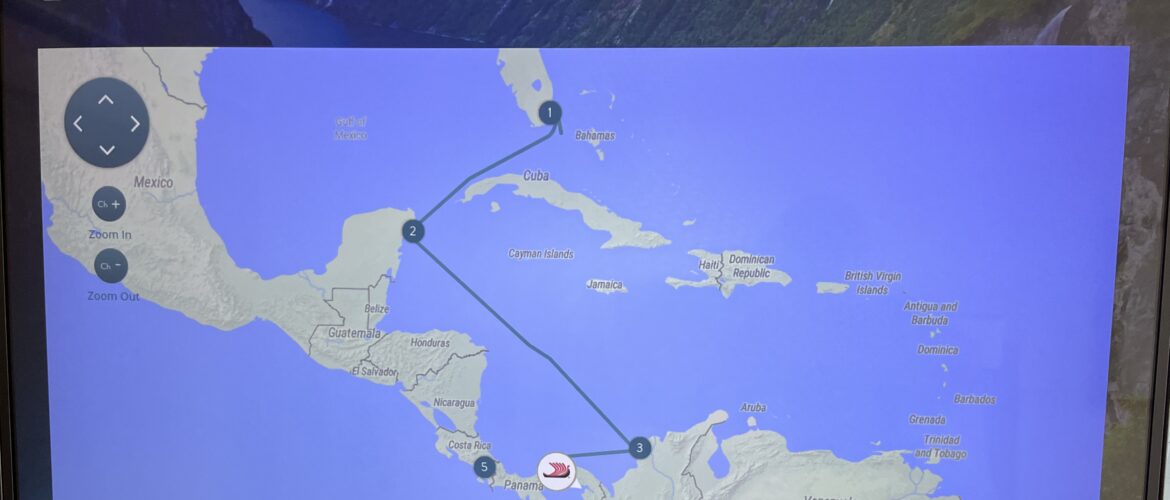
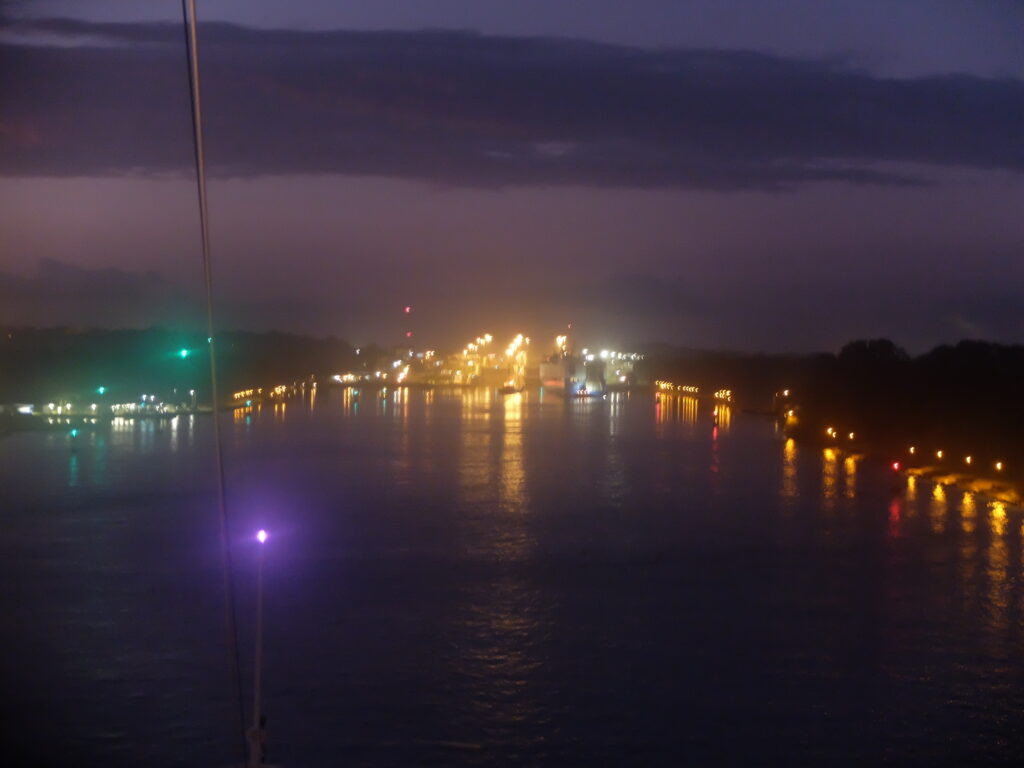
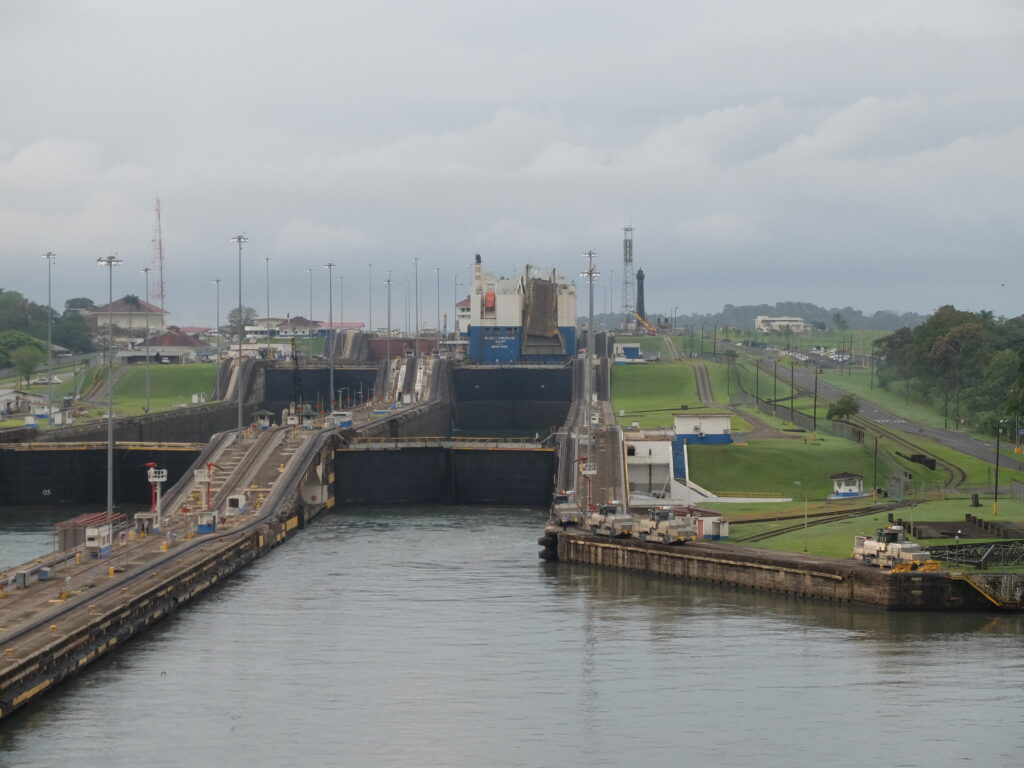
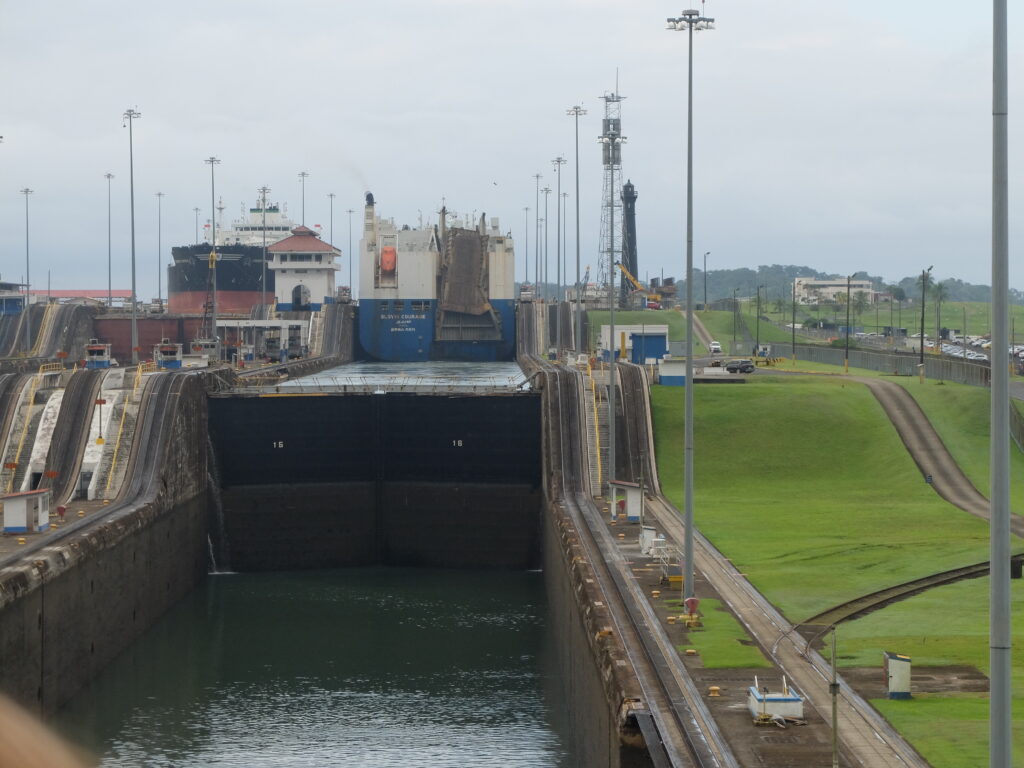
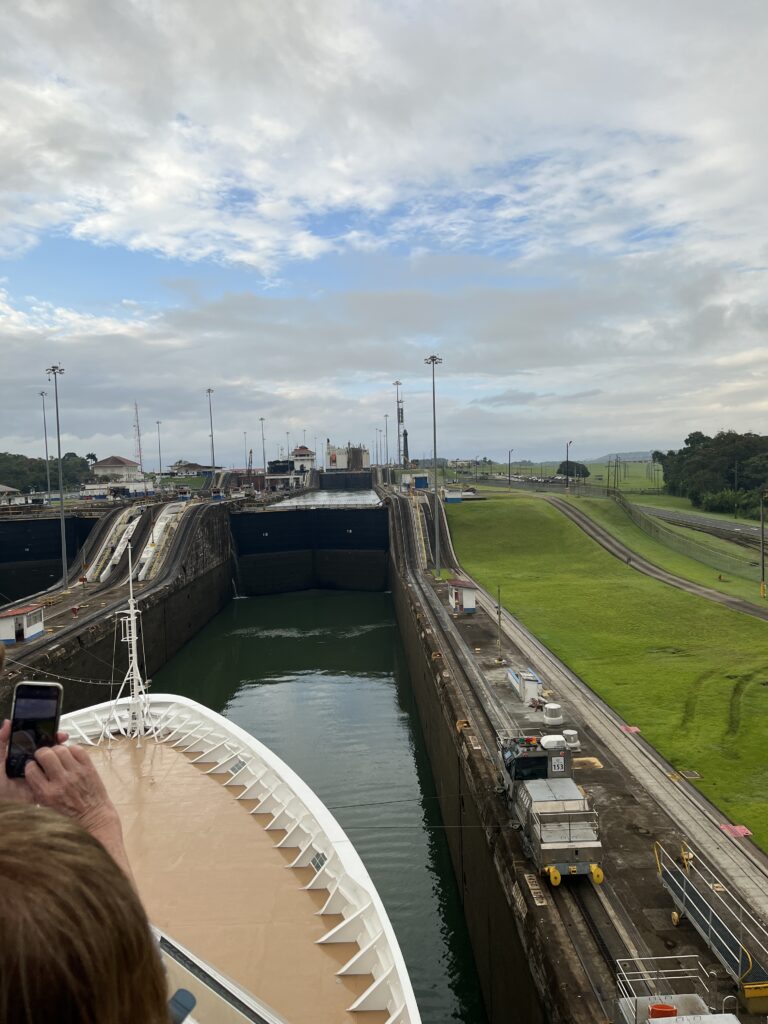
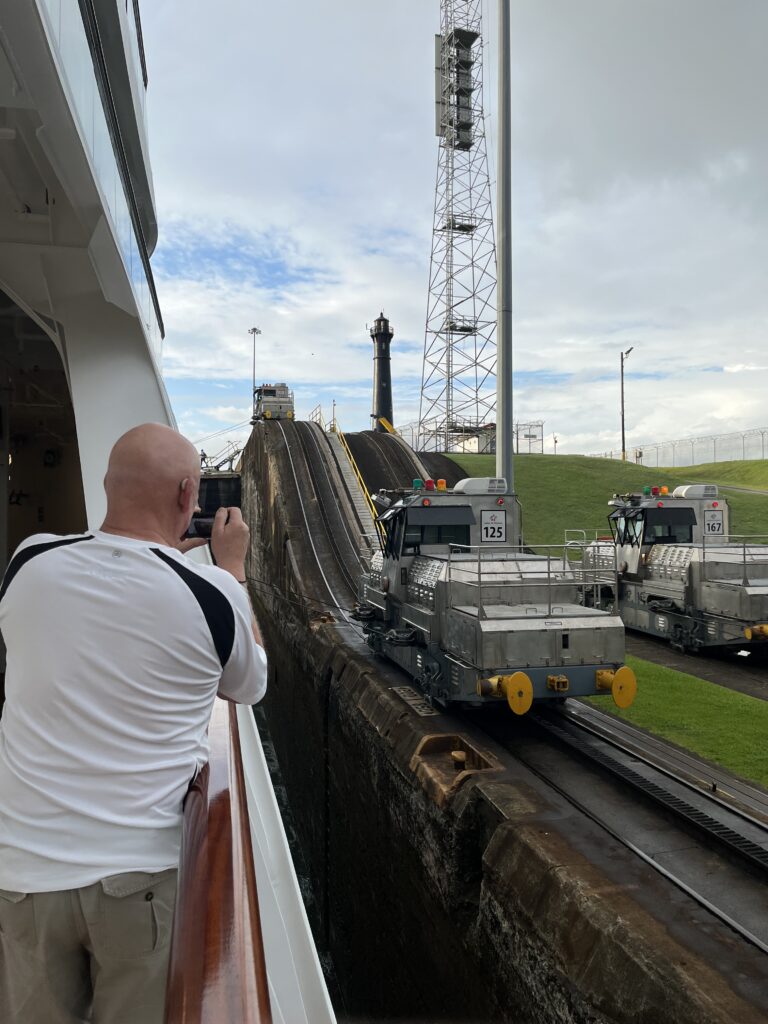
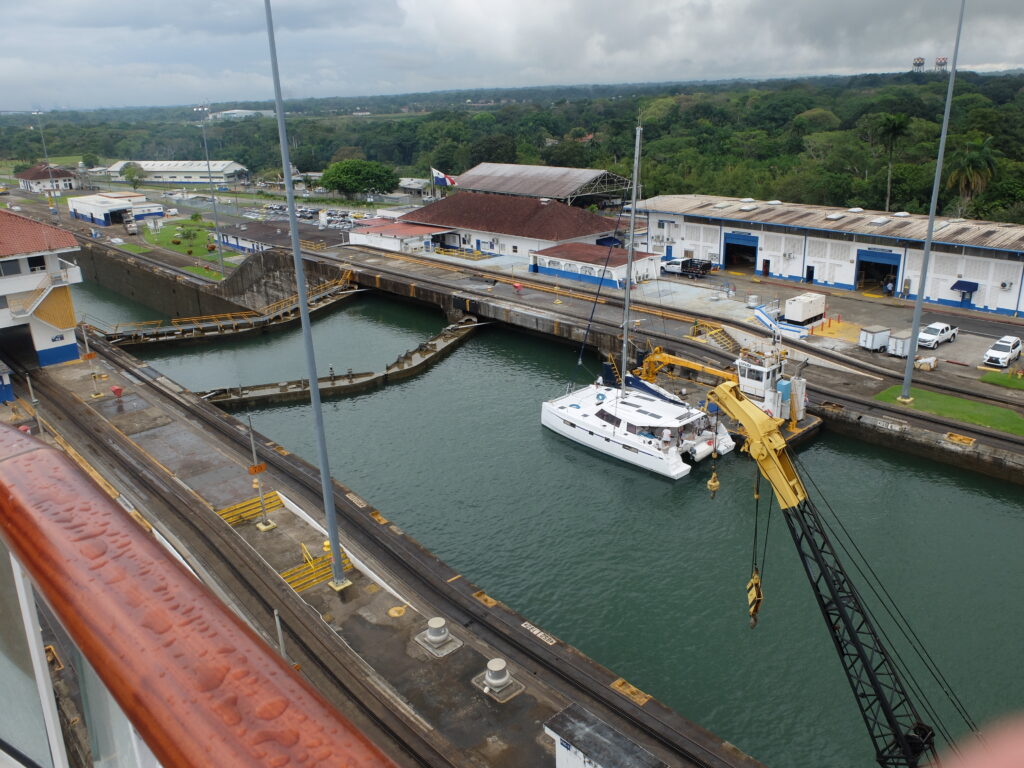
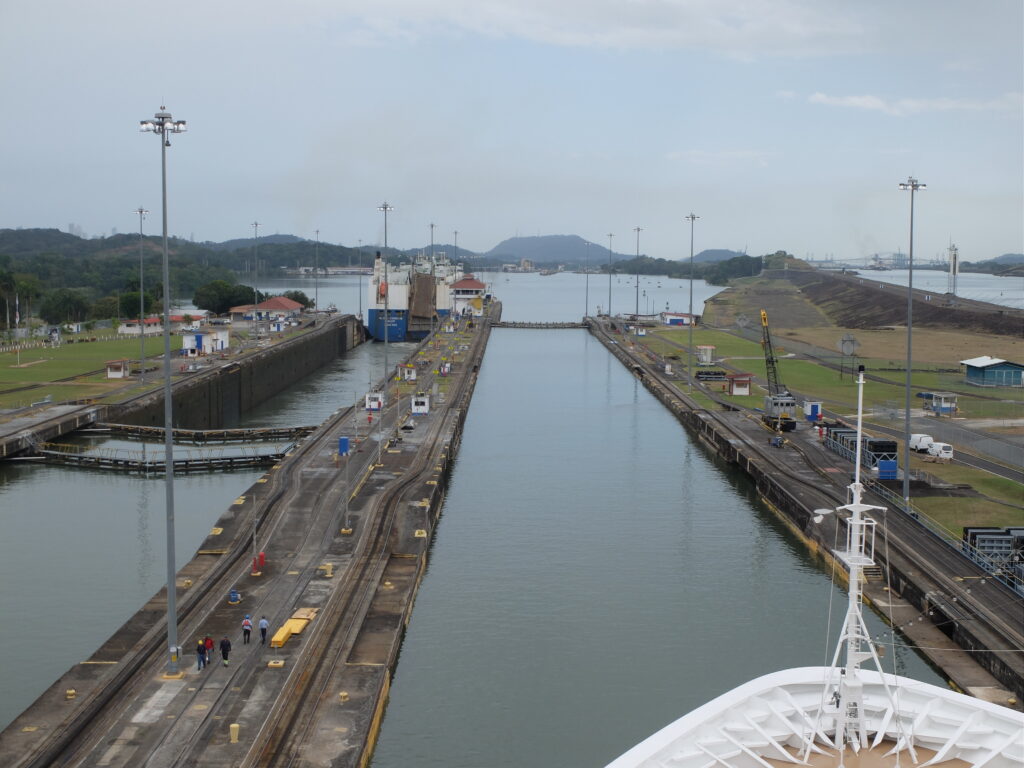
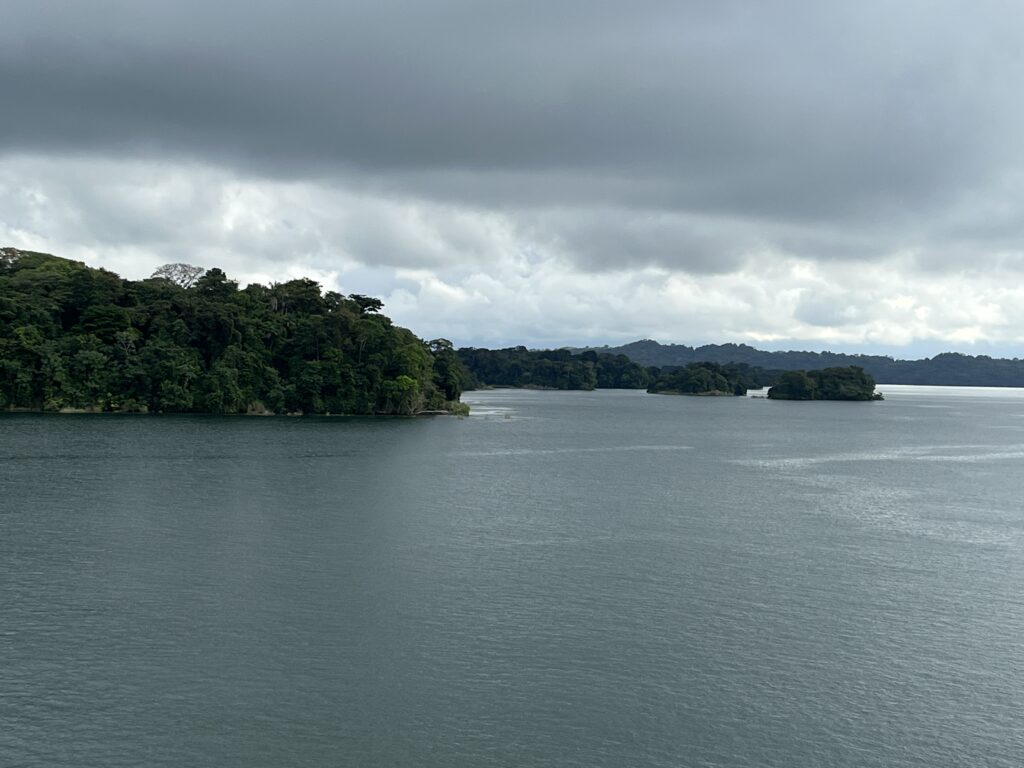
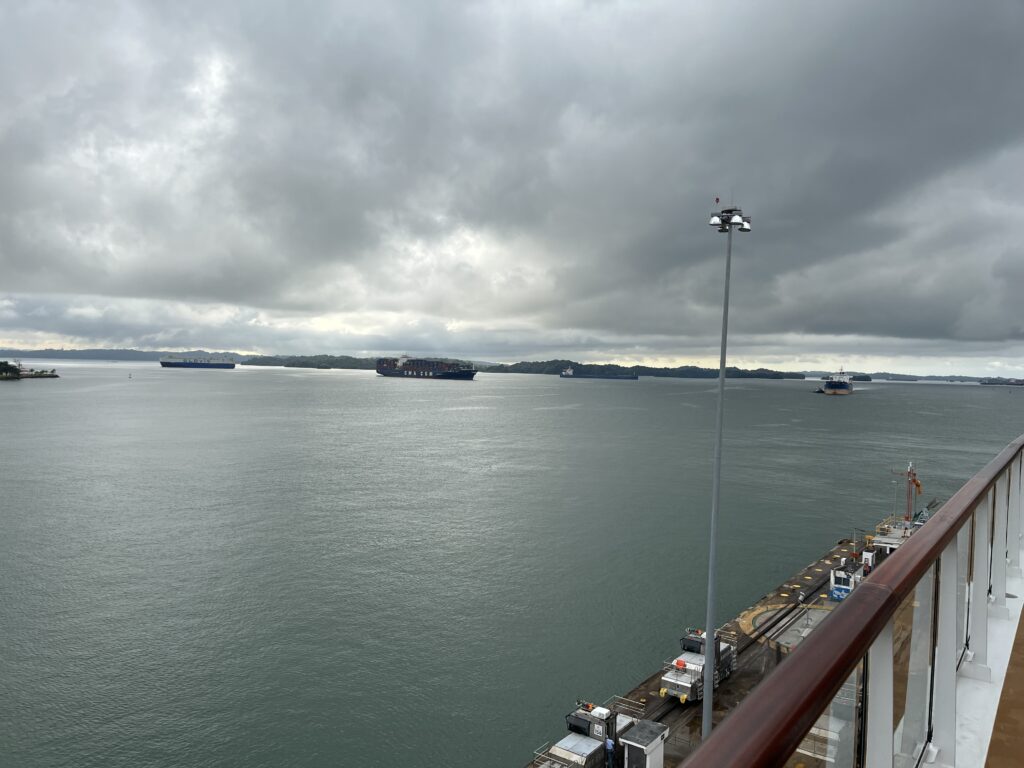
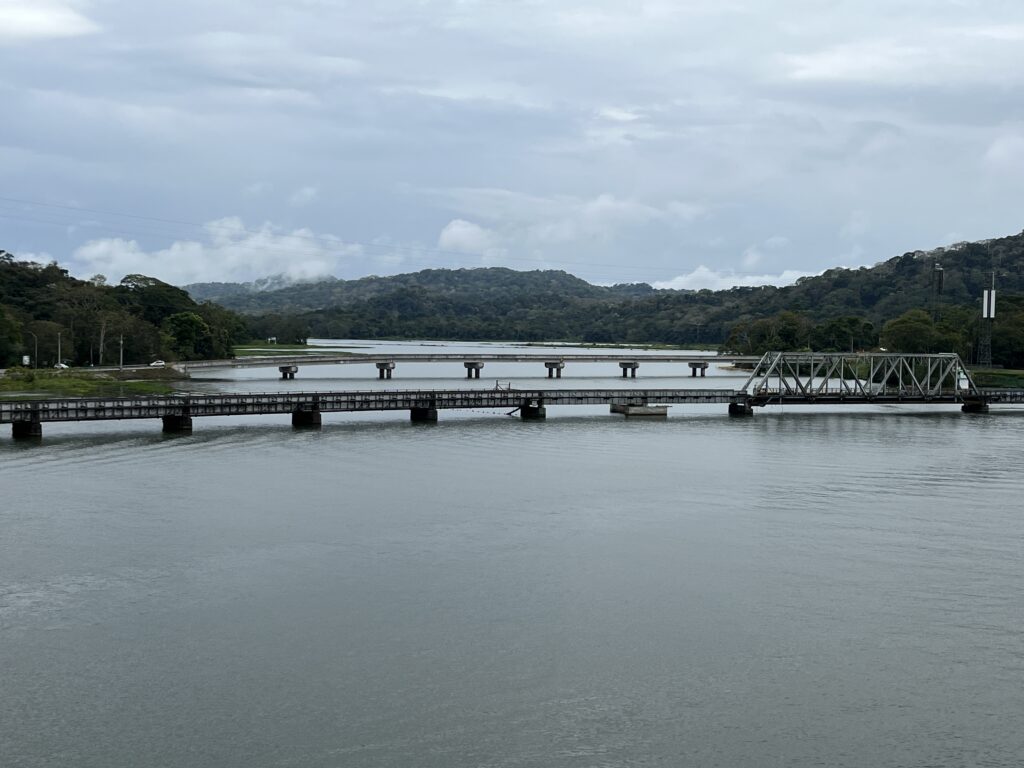
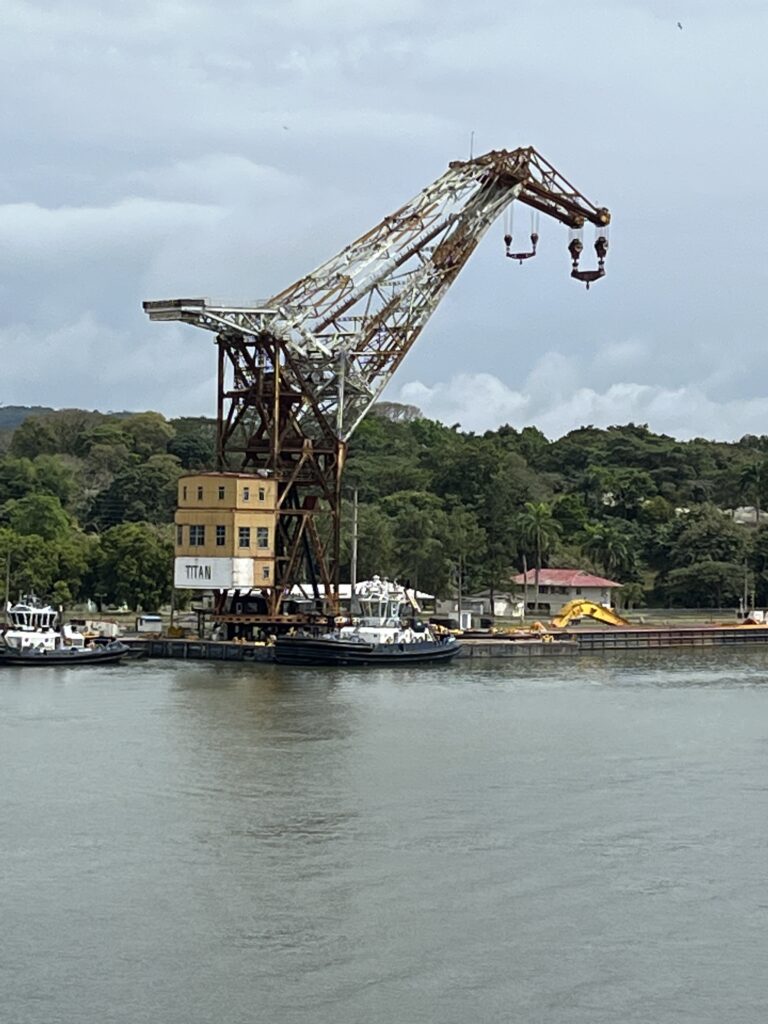
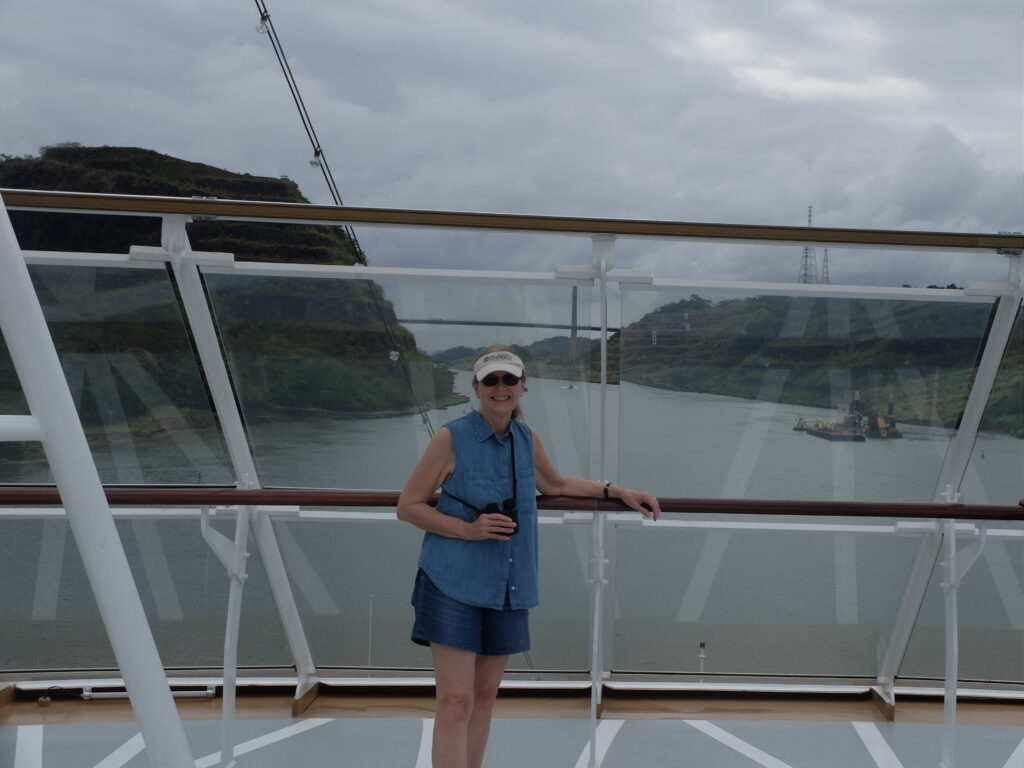
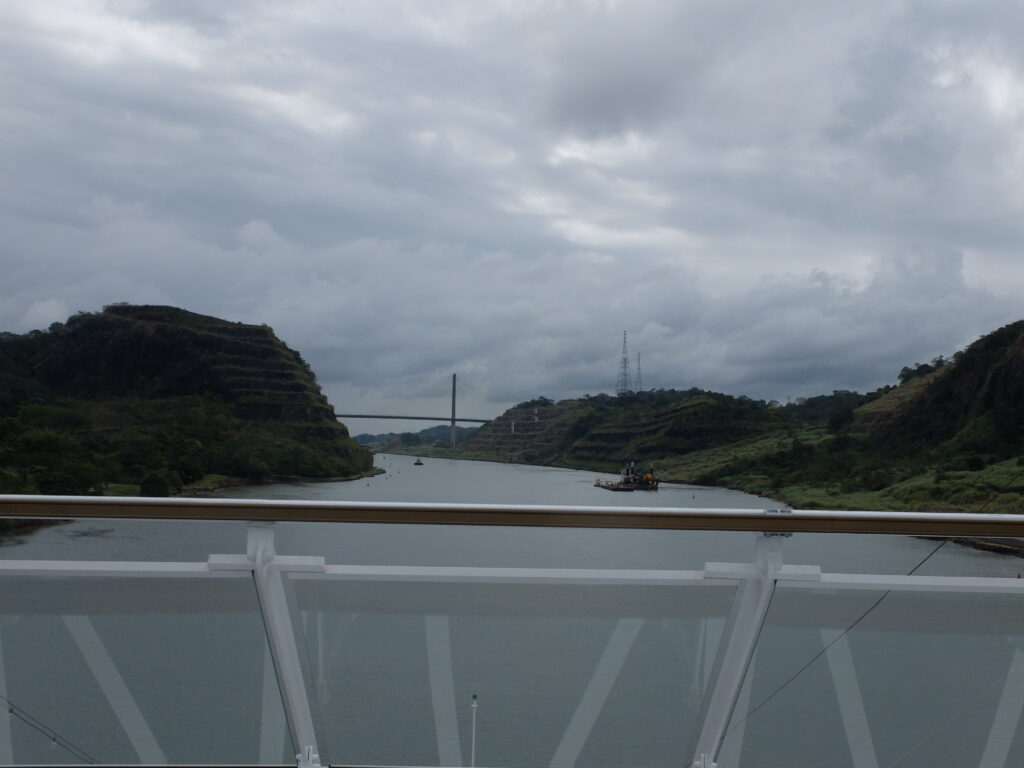
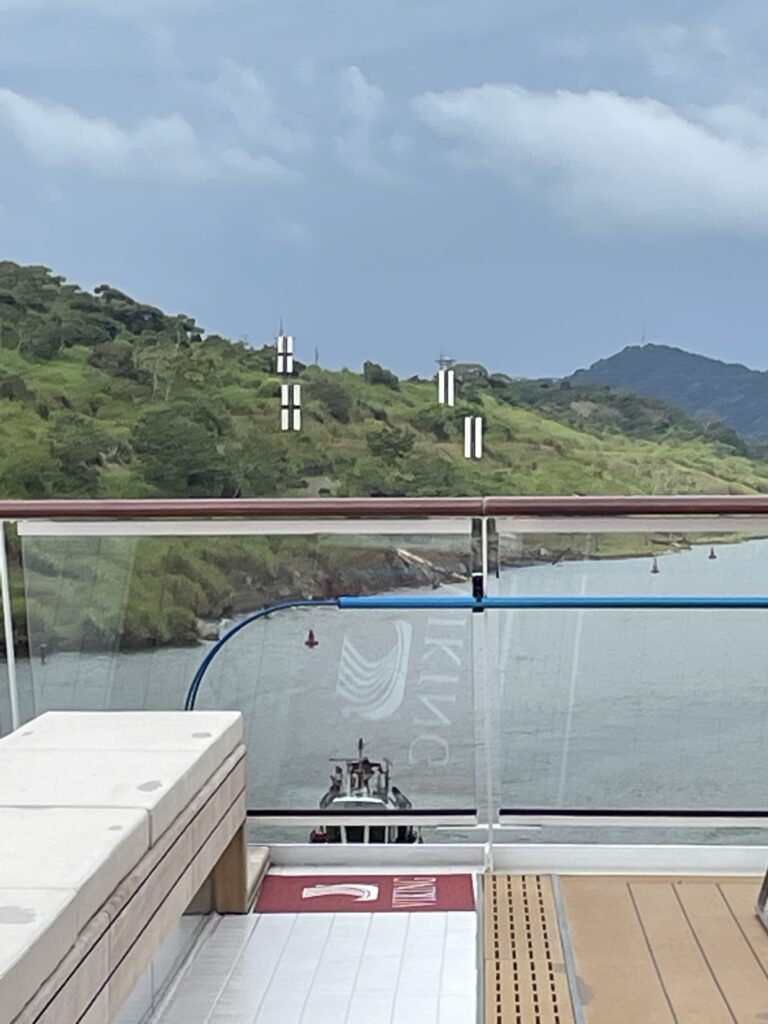
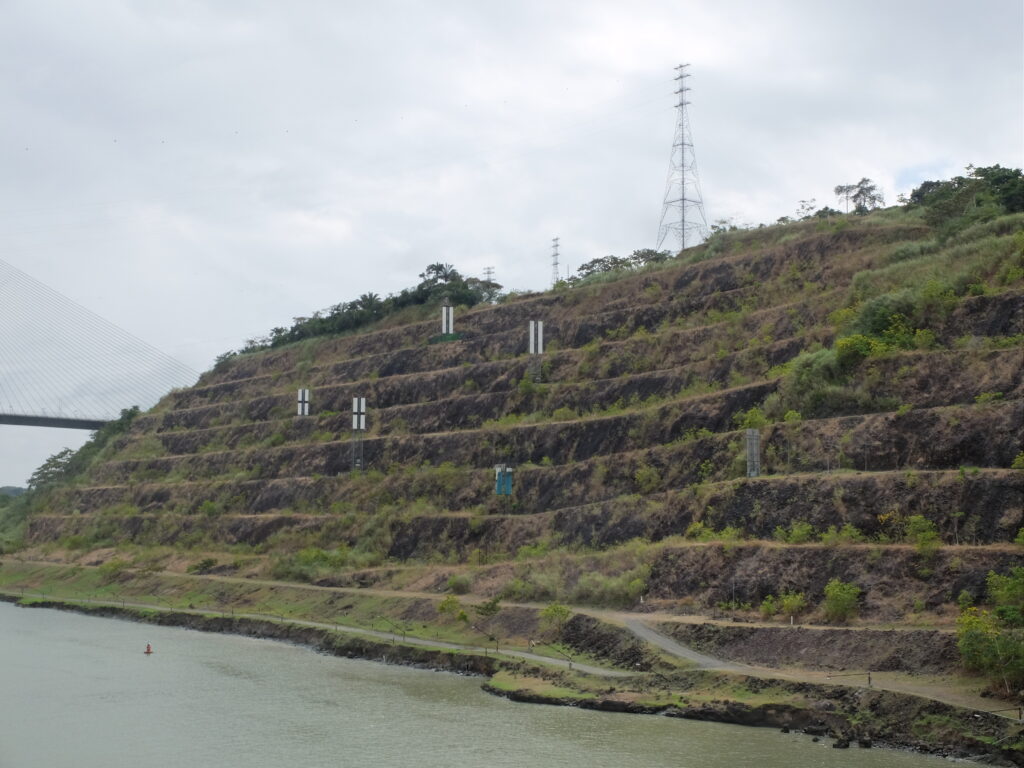
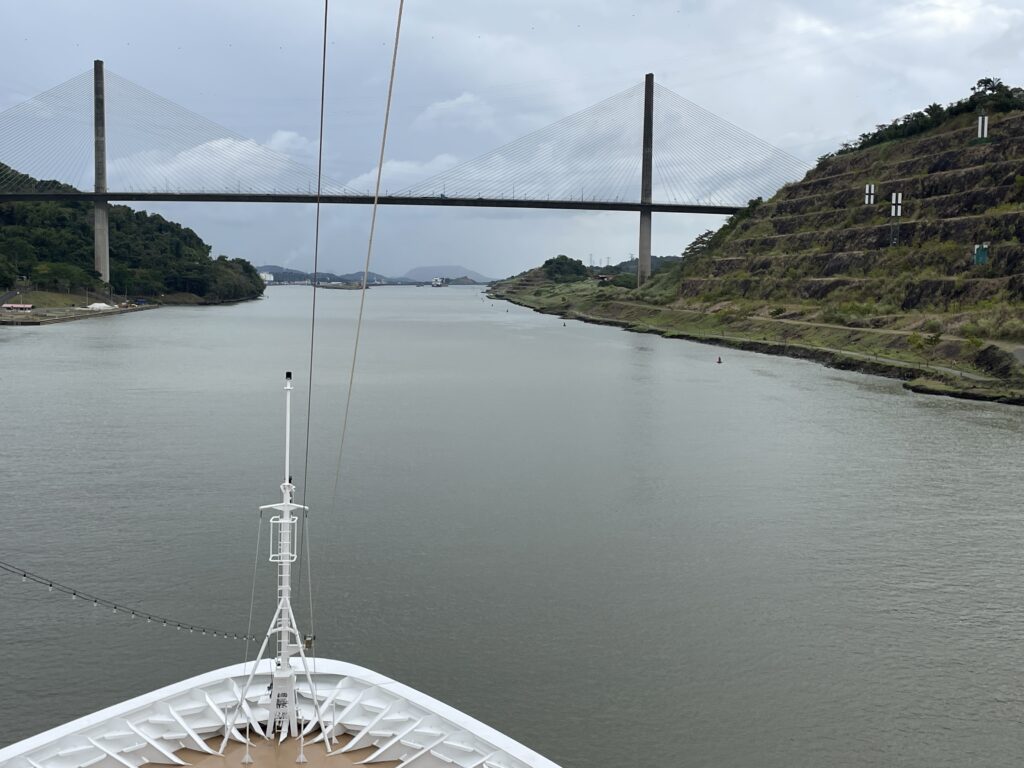
Locks are always interesting, never boring.
But these you didn’t have to operate by hand! 😁